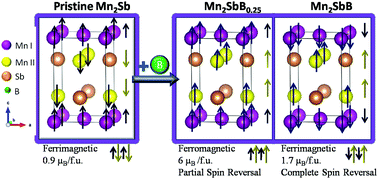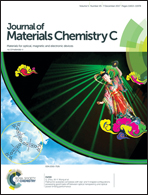Anomalous enhancement in magnetization upon interstitial doping due to spin reversal in magnetic materials†
Abstract
Present work reports a novel strategy for enhancing the magnetic properties employing interstitial doping. Mn2Sb has been selected for a proof-of-concept study of the proposed strategy as it is a well-established simple binary ferrimagnetic compound and is amenable to interstitial doping owing to its structure. This approach has been experimentally demonstrated and also verified theoretically, using first-principles density functional theory based calculations in Mn2Sb doped with interstitial boron. X-ray diffraction and transmission electron microscopy analyses of the synthesized alloy confirmed the interstitial doping of boron into Mn2Sb. Magnetic measurements reveal a substantial increase in magnetization for a particular doping concentration of boron. First-principles density functional theory based calculations reveal that depending on the concentration of boron in Mn2Sb, the spin alignment of Mn atoms undergoes either a partial or a complete reversal. This leads to an anomalously high magnetic moment in the former and an increment in the overall magnetic moment in the latter case, which is also in quantitative agreement with the experimental results. This proposed strategy of interstitial doping could also be employed to other similar materials for enhancing their magnetic properties.



 Please wait while we load your content...
Please wait while we load your content...